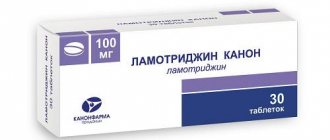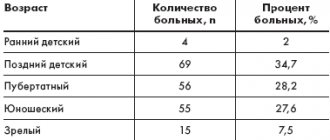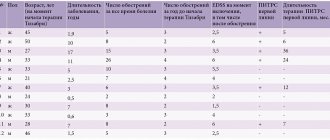Lamotrigine (Lamictal)
Lamotrigine (Lamictal), discovered in terms of the treatment of affective disorders, like most drugs of this class, remains for me not very clear in terms of its mechanism of action, incomprehensible, but promising for psychiatry, especially when it comes to maintenance therapy of bipolar affective disorder; treatment of depression developing as part of recurrent depression or bipolar affective disorder and the need to strengthen internal control over impulsive behavior, for example, in various forms of addiction to alcohol, psychoactive substances or gambling. When working with lamotrigine, I am impressed by its relative indifference to liver enzymes, as opposed to their inducer such as carbamazepine (Finlepsin) or an inhibitor - the drug valproic acid (Depakine), and therefore the possibility of its combination with these drugs and relative safety in terms of hepatotoxicity of lamotrigine. At the same time, it should be remembered that when lamotrigine is prescribed together with the liver enzyme inducer (P450 2D6) carbamazepine (finlepsin), the concentration of lamotrigine in the blood is reduced by almost 50%. It can also be noted that when lamotrigine is prescribed while taking oral contraceptins, its concentration in the blood drops even by 60%. When working with psychotropic drugs, my priority has always been their “safety spectrum” (the famous principle of doctors - “do no harm”), fortunately or unfortunately (sometimes in the case of pronounced symptoms and a threat to life for the patient, it is necessary to achieve rapid effect of using psychotropic drugs with a large number of side effects). In terms of safety, lamotrigine is easy to dose. Typically, the first two weeks of therapy are prescribed at a dose of 25 mg. per day, during the third and fourth weeks the dose can be increased by 50 mg, and in the fifth and sixth weeks of therapy by 100 mg. When combining lamotrigine with other anticonvulsants, increasing the dose in the third to sixth week of therapy, the dose increases two times less than with monotherapy with this medication. Lamotrigine is also interesting in terms of its use in children; it can be prescribed starting from the age of three to children with partial and generalized tonic-clonic convulsive syndromes. The most commonly reported side effects of lamotrigine are headache, sleep disturbance, nausea and dizziness. Sometimes the severity of these side effects somewhat limits its clinical use. An extremely rare, but still quite serious complication from taking lamotrigine is aseptic meningitis, the first symptoms of which are: photophobia, headache, nausea and fever (fever). The danger of developing aseptic meningitis is aggravated by the fact that it can develop either a day later (cases of the development of symptoms of meningitis even a few minutes after the start of taking it are described) after starting lamotrigine therapy, or even after a month and a half of taking it. Skin reactions are observed in 4% of cases while taking this drug, however, they pass quickly. The use of lamotrigine is not recommended during pregnancy or the postpartum period.
Lamotrigine: area of application in psychiatry
Lamotrigine is prescribed as a mood stabilizer for type 2 bipolar disorder, when depression predominates and hypomania occurs very rarely or does not exist at all. The drug will definitely not overcome full-blown hypomania or full-blown mania with psychosis; something stronger will be needed.
Sometimes, in case of bipolar disorder II, it may even be prescribed as the only drug. But only if you are in good and long-term remission.
Lamotrigine: dosage for depression and bipolar disorder
Lamotrigine begins to “work” at doses of 100 mg and above, so I’ll say right away to fans of “microdosing” - if 50 mg helps you, then this is a placebo effect.
The average dose is 100-200 mg per day, but it can be increased as prescribed by a doctor and if it is well tolerated. You definitely shouldn’t increase it yourself, because the drug is rich in side effects. Only a doctor with a clear head can assess all the risks, and not you with your anxiety, depression and bipolar disorder.
The dosage is increased very gradually, but more on that later.
Lamotrigine: original or generics?
The original drug is Lamictal, but this infection costs 2000 rubles for a package of 30 tablets of 100 mg. If you have money, buy it. No - switch to generics.
I am currently taking Seisar, made in Macedonia. A package of 100 mg costs about 800 rubles. This is one of the cheapest generics, but it works great. And this is not just my opinion, many doctors and patients speak well of it. By the way, it tastes sweet





